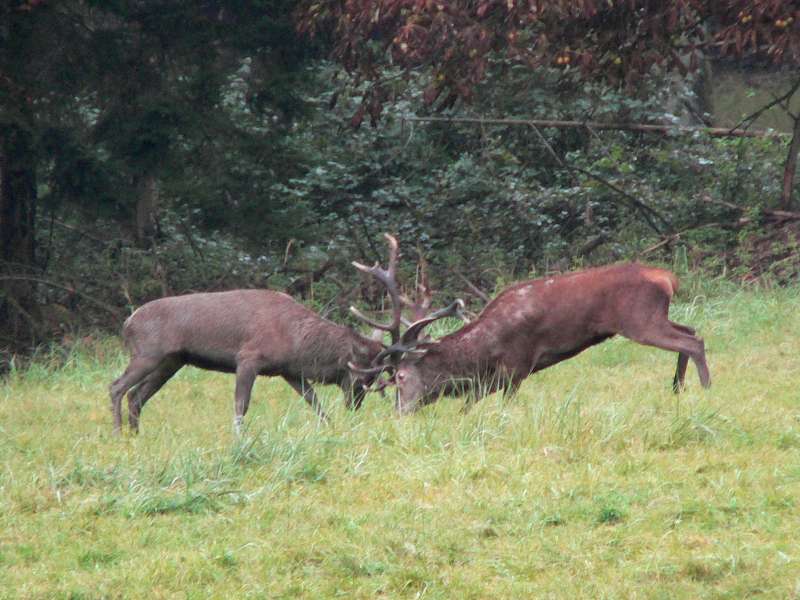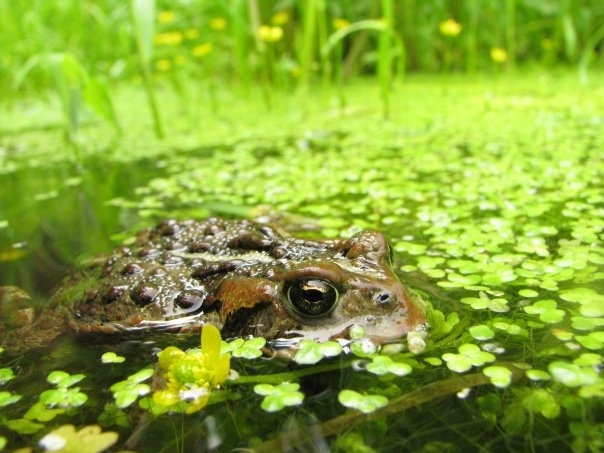|
Simarouba Amara
''Simarouba amara'' is a species of tree in the family Simaroubaceae, found in the rainforests and savannahs of South America, South and Central America and the Caribbean. It was first species description, described by Jean Baptiste Christophore Fusée Aublet, Aubl. in French Guiana in 1775 and is one of six species of ''Simarouba''. The tree is evergreen, but produces a new set of leaves once a year. It requires relatively high levels of light to grow and grows rapidly in these conditions, but lives for a relatively short time. In Panama, it flowering, flowers during the dry season in February and March, whereas in Costa Rica, where there is no dry season it flowers later, between March and July. As the species is dioecious, the trees are either male or female and only produce male or female flowers. The small yellow flowers are thought to be insect pollination, pollinated by insects, the resulting fruits are seed dispersal, dispersed by animals including monkeys, birds and fruit ... [...More Info...] [...Related Items...] OR: [Wikipedia] [Google] [Baidu] |
Dioecious
Dioecy ( ; ; adj. dioecious, ) is a characteristic of certain species that have distinct unisexual individuals, each producing either male or female gametes, either directly (in animals) or indirectly (in seed plants). Dioecious reproduction is biparental reproduction. Dioecy has costs, since only the female part of the population directly produces offspring. It is one method for excluding self-fertilization and promoting allogamy (outcrossing), and thus tends to reduce the expression of recessive deleterious mutations present in a population. Plants have several other methods of preventing self-fertilization including, for example, dichogamy, herkogamy, and self-incompatibility. In zoology In zoology, dioecy means that an animal is either male or female, in which case the synonym gonochory is more often used. Most animal species are gonochoric, almost all vertebrate species are gonochoric, and all bird and mammal species are gonochoric. Dioecy may also describe colonies ... [...More Info...] [...Related Items...] OR: [Wikipedia] [Google] [Baidu] |
Plant Physiologist
Plant physiology is a subdiscipline of botany concerned with the functioning, or physiology, of plants. Plant physiologists study fundamental processes of plants, such as photosynthesis, respiration, plant nutrition, plant hormone functions, tropisms, nastic movements, photoperiodism, photomorphogenesis, circadian rhythms, environmental stress physiology, seed germination, dormancy and stomata function and transpiration. Plant physiology interacts with the fields of plant morphology (structure of plants), plant ecology (interactions with the environment), phytochemistry (biochemistry of plants), cell biology, genetics, biophysics and molecular biology. Aims The field of plant physiology includes the study of all the internal activities of plants—those chemical and physical processes associated with life as they occur in plants. This includes study at many levels of scale of size and time. At the smallest scale are molecular interactions of photosynthesis and internal diffusion ... [...More Info...] [...Related Items...] OR: [Wikipedia] [Google] [Baidu] |
Biological Life Cycle
In biology, a biological life cycle (or just life cycle when the biological context is clear) is a series of stages of the life of an organism, that begins as a zygote, often in an egg, and concludes as an adult that reproduces, producing an offspring in the form of a new zygote which then itself goes through the same series of stages, the process repeating in a cyclic fashion. "The concept is closely related to those of the life history, Developmental biology, development and ontogeny, but differs from them in stressing renewal." Transitions of form may involve growth, asexual reproduction, or sexual reproduction. In some organisms, different "generations" of the species succeed each other during the life cycle. For Embryophyte, plants and many algae, there are two multicellular stages, and the life cycle is referred to as alternation of generations. The term life history is often used, particularly for organisms such as the red algae which have three multicellular stages (or mor ... [...More Info...] [...Related Items...] OR: [Wikipedia] [Google] [Baidu] |
Intraspecific Competition
Intraspecific competition is an interaction in population ecology, whereby members of the same species compete for limited resources. This leads to a reduction in fitness for both individuals, but the more fit individual survives and is able to reproduce. By contrast, interspecific competition occurs when members of different species compete for a shared resource. Members of the same species have rather similar requirements for resources, whereas different species have a smaller contested resource overlap, resulting in intraspecific competition generally being a stronger force than interspecific competition. Individuals can compete for food, water, space, light, mates, or any other resource which is required for survival or reproduction. The resource must be limited for competition to occur; if every member of the species can obtain a sufficient amount of every resource then individuals do not compete and the population grows exponentially. Prolonged exponential growth is rar ... [...More Info...] [...Related Items...] OR: [Wikipedia] [Google] [Baidu] |
Interspecific Competition
Interspecific competition, in ecology, is a form of competition in which individuals of ''different'' species compete for the same resources in an ecosystem (e.g. food or living space). This can be contrasted with mutualism, a type of symbiosis. Competition between members of the same species is called intraspecific competition. If a tree species in a dense forest grows taller than surrounding tree species, it is able to absorb more of the incoming sunlight. However, less sunlight is then available for the trees that are shaded by the taller tree, thus interspecific competition. Leopards and lions can also be in interspecific competition, since both species feed on the same prey, and can be negatively impacted by the presence of the other because they will have less food. Competition is only one of many interacting biotic and abiotic factors that affect community structure. Moreover, competition is not always a straightforward, direct, interaction. Interspecific competition may ... [...More Info...] [...Related Items...] OR: [Wikipedia] [Google] [Baidu] |
Competition (biology)
Competition is an Biological interaction, interaction between organisms or species in which both require one or more Resource (biological), resources that are in Limiting factor, limited supply (such as food, water, or Territory (animal), territory). Competition lowers the Fitness (biology), fitness of both organisms involved since the presence of one of the organisms always reduces the amount of the resource available to the other. In the study of community ecology, competition within and between members of a species is an important biological interaction. Competition is one of many interacting Biotic component, biotic and Abiotic component, abiotic factors that affect Community (ecology), community structure, species diversity, and population dynamics (shifts in a population over time). There are three major Mechanism (biology), mechanisms of competition: interference, exploitation, and apparent competition (in order from most direct to least direct). Interference and exploitat ... [...More Info...] [...Related Items...] OR: [Wikipedia] [Google] [Baidu] |
Costa Rica
Costa Rica, officially the Republic of Costa Rica, is a country in Central America. It borders Nicaragua to the north, the Caribbean Sea to the northeast, Panama to the southeast, and the Pacific Ocean to the southwest, as well as Maritime boundary, maritime border with Ecuador to the south of Cocos Island. It has a population of around five million in a land area of nearly . An estimated people live in the capital and largest city, San José, Costa Rica, San José, with around two million people in the surrounding metropolitan area. The sovereign state is a Presidential system, presidential republic. It has a long-standing and stable Constitution of Costa Rica, constitutional democracy and a highly educated workforce. The country spends roughly 6.9% of its budget (2016) on education, compared to a global average of 4.4%. Its economy, once heavily dependent on agriculture, has diversified to include sectors such as finance, corporate services for foreign companies, pharmaceut ... [...More Info...] [...Related Items...] OR: [Wikipedia] [Google] [Baidu] |
La Selva Biological Station
La Selva Biological Station is a protected area encompassing 1,536 ha of low-land tropical rain forest in northeastern Costa Rica. It is owned and operated by the Organization for Tropical Studies,Matlock, R., & Hartshorn, G. (1999). La selva biological station (OTS). Bulletin of the Ecological Society of America, 188-193. Retrieved from https://www.jstor.org/stable/20168346 a consortium of universities and research institutions from the United States, Costa Rica, and Puerto Rico.Moorman, R. (2006). Benefits of local residents visiting La Selva Biological Station, Costa Rica. Environmental Conservation, 88-99 Recognized internationally as one of the most productive field stations in the world for tropical forest research and peer-reviewed publications, La Selva hosts approximately 300 scientists and 100 university courses every year. The primary goal of La Selva Biological Station is to preserve and protect an intact forest landscape, intact forest, as well as providing laboratory f ... [...More Info...] [...Related Items...] OR: [Wikipedia] [Google] [Baidu] |
Panama
Panama, officially the Republic of Panama, is a country in Latin America at the southern end of Central America, bordering South America. It is bordered by Costa Rica to the west, Colombia to the southeast, the Caribbean Sea to the north, and the Pacific Ocean to the south. Its capital and largest city is Panama City, whose metropolitan area is home to nearly half of the country's over million inhabitants. Before the arrival of Spanish Empire, Spanish colonists in the 16th century, Panama was inhabited by a number of different Indigenous peoples of Panama, indigenous tribes. It Independence Act of Panama, broke away from Spain in 1821 and joined the Republic of Gran Colombia, a union of Viceroyalty of New Granada, Nueva Granada, Ecuador, and Venezuela. After Gran Colombia dissolved in 1831, Panama and Nueva Granada eventually became the Republic of Colombia. With the backing of the United States, Panama seceded from Colombia in 1903, allowing the construction of the Panama Ca ... [...More Info...] [...Related Items...] OR: [Wikipedia] [Google] [Baidu] |
Barro Colorado Island
Barro Colorado Island is located in the man-made Gatun Lake in the middle of the Panama Canal. The island was formed when the waters of the Chagres River were dammed to form the lake in 1913. When the waters rose, they covered a significant part of the existing tropical forest, but certain hilltops remained as islands in the middle of the lake. It has an area of . History The island was set aside as a nature reserve on April 17, 1923, by the U.S. Government. Initially administered by the Panama Canal Company under the direction of James Zetek, since 1946 Barro Colorado Island has been administered by the Smithsonian, together with five adjacent peninsulas, as the Barro Colorado Nature Monument. This Monument has an area of . It is among the most-studied areas of tropical forest in the world. The Nature Monument has been designated an Important Bird Area (IBA) by BirdLife International. The Smithsonian Tropical Research Institute (STRI) has a permanent research center on the ... [...More Info...] [...Related Items...] OR: [Wikipedia] [Google] [Baidu] |
Ecology
Ecology () is the natural science of the relationships among living organisms and their Natural environment, environment. Ecology considers organisms at the individual, population, community (ecology), community, ecosystem, and biosphere levels. Ecology overlaps with the closely related sciences of biogeography, evolutionary biology, genetics, ethology, and natural history. Ecology is a branch of biology, and is the study of abundance (ecology), abundance, biomass (ecology), biomass, and distribution of organisms in the context of the environment. It encompasses life processes, interactions, and adaptations; movement of materials and energy through living communities; ecological succession, successional development of ecosystems; cooperation, competition, and predation within and between species; and patterns of biodiversity and its effect on ecosystem processes. Ecology has practical applications in fields such as conservation biology, wetland management, natural resource m ... [...More Info...] [...Related Items...] OR: [Wikipedia] [Google] [Baidu] |






